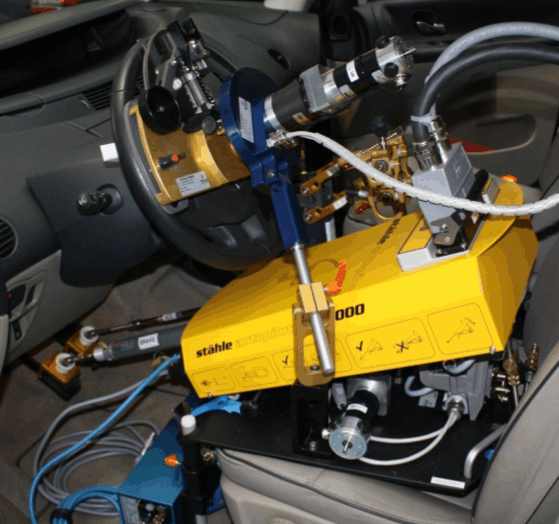| Driverless Cars - More Than Just Google |
| Written by Harry Fairhead |
| Saturday, 18 February 2012 |
|
Google's autonomous car has already clocked up thousands of miles on American roads and is even legal on public roads in Nevada. Now there are also robot cars under development in France, Germany, and the UK. Driverless cars have come a long way since Stanley, Standford University's robot vehicle, won the DARPA Grand Challenge 2005 by traversing a route of 150 miles through the Mojave Desert. In 2007 DARPA (Defense Advanced Research Projects Agency) set as arguably more difficult challenge - that of negotiating a 60 mile urban area course including merging with other traffic and obeying traffic regulations without a driver, something that five vehicles achieved although the fastest time, by contest winner Carnegie Mellon's Boss was an average 14 mph. We reported last August on a Chinese driverless car that had driven over 175 miles on an expressway at an average speed of over 50 mph, overtaking a reported 67 times. Now there are several European initiatives joining in the drive for autonomous vehicles. The latest is a French project - a Renault Grand Espace fitted with a Stahle Robot - under development by a team from IFSTTAR, a French R&D organization, and the Embedded Electronic Systems Research Institute at ESIGELEC, an engineering school in Rouen and is part of a large R&D program called QUASPER dedicated to the development of new technologies of sensors and perception systems.
This video footage shows it negotiating a 160 metre track, without other vehicles, also driving at 55 kph in rain and braking to avoid an object simulating a pedestrian.
Rather more impressive is the latest video from AutoNOMOS Labs, part of the Artificial Intelligence Group of the Freie Universität Berlin which shows the driverless car called MadeInGermany driving among city traffic in Berlin on a 20km track from Kaiserdamm to Brandenburg Gate.
In the UK researchers at the University of Oxford have taken over a project initiated by BAE systems based on the Bowler Wildcat. The Wildcat now boasts an array of sensors that maps out its surroundings and lets it navigate without GPS; not only monitoring the road but also keeping an eye on traffic patterns and changing conditions, and watching for pedestrians and other obstacles.
Robotic cars are undoubtedly part of future technology and if you want a grounding in the artificial intelligence that goes into their programming Sebastian Thrun's Udacity course, CS 373, which explores probabilistic inference, computer vision, machine learning, and planning in the context of building self-driving cars starts its first presentation on February 20, 2012. See Driverless Cars Become Legal - The Implications for an analysis of how driverless cars will change things. It's more surprising than you would imagine! More InformationQuasperAutonomos Labs Oxford Mobile Robotics Group: Wildcat Related ArticlesDriverless Cars Become Legal - The Implications Sebastian Thrun on Google's driverless carGoogle drives a car China and the rise of the driverless car Robot cars - provably uncrashable?
Comments
or email your comment to: comments@i-programmer.info
To be informed about new articles on I Programmer, subscribe to the RSS feed, follow us on Google+, Twitter, Linkedin or Facebook or sign up for our weekly newsletter.
|
| Last Updated ( Sunday, 19 February 2012 ) |


